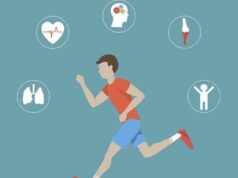
Tasks we all do at work can easily overload our body and lead to our body, muscles, ligaments, tendons, bones and nerves. We can also end up with a lot of sprains and or strains which are not that easily avoidable, especially if you are not careful.
All of what we mentioned here is what is known as musculoskeletal disorders or MSDs for short, and today we will talk about them.

MSDs are one of the most common and chronic conditions everywhere in the world but there is some good news tied to this. These are often preventable and you don’t have to lose time from work or pay billions of dollars of healthcare costs from visits each year. The prevention path starts with your business implementing strategies to reduce and prevent workplace MSDs and it must:
- Identify all the hazards
- Apply this strategy throughout the entire business
- Put controls in place
- Allow everyone to participate in the prevention
Source: hellophysio.sg
Before we start explaining the MSDs a bit more and before we name all the things you need to know we must mention that even though you suffer from these there is always help and a lot of professionals that can aid and alleviate pain associated with the MSDs. One of those is Sciatica Pain Treatment.
1. When it comes to MSDs what we most commonly meet are shoulder pain and injuries, elbow, hand and wrist, knee, foot and ankle pain and injuries. Now, these disorders can be a real challenge in a sense of diagnostics for the primary care providers and the reason for that is that the diagnostics are mostly dependent on the patient’s medical history combined with a good physical exam with an understanding of anatomy and physiology.
Now there is another difficulty and it concerns determining whether the MSD complaint is acute or chronic, articular or non-articular, inflammatory or non-inflammatory and localized or systemic in distribution.

2. Another thing to know is that work can cause some of the MSDs or worsen those that you already have. These can be related to hazards such as awkward or sustained posture, forced exertion, increased repetition or any type of combination of already mentioned.
MSDS usually arise from improper movements and techniques such as forward bending or twisting of the back, forceful hand gripping, holding and overreaching away from the body with your arms.
3. There is a more risky situation that can be greater for the development or worsening of the MSDs and those are awkward, fixed or constrained body positions, continuous repetition of the same movement many assembly line workers suffer from or simply sitting down behind your desk and typing on the keyboard, forced concentration on certain parts of the body like pinching, squeezing or vibration and pace of work that does not allow you the sufficient recovery and rest between movements and tasks.

4. Most of you will probably wonder if you can and how you can treat your MSDs. As we already mentioned treatment is possible and it mostly works well, but prevention is something that can work better.
If you didn’t manage to prevent your MSD and if you are in the position of having to treat it then the underlying reason for your musculoskeletal discomfort will determine your treatment approach.
Acupuncture, chiropractic adjustments, occupational therapy, pain medications, physical therapy, splints, steroid injections, and therapeutic massage are all common therapies that can be and are applied, again, all depending on a case-to-case basis.
5. Another thing people are wondering is whether they can treat some of these at home without going to a doctor. The answer to that is also yes and, in some cases, it will be easy in others not so much.

Your healthcare professional may advise you on how to manage musculoskeletal discomfort at home. Recommendations may include: hot and cold treatment, over-the-counter pain medicines, strength and conditioning activities, stretching exercises, and stress reduction approaches.
6. We have talked a lot about work being the blame for MSDs but in all reality, other things can get you to this issue. What people do not think about is the fact that certain conditions may impact you and cause or even increase the risk of MSD pain and some of those are:
- Arthritis is a chronic inflammatory disease of the joints. Many arthritis patients have joint pain and stiffness.
- Fibromyalgia is a chronic disease that causes widespread musculoskeletal pain and tiredness. Fibromyalgia patients typically report muscular, tendon, or ligament discomfort.
- Some disorders produce nerve compression or pinched nerves, resulting in “tunnel” symptoms. Carpal tunnel syndrome, cubital tunnel syndrome, and tarsal tunnel syndrome are only a few instances of these diseases. These disorders are frequently brought on by overuse injuries.
7. Never neglect pain will be the number one piece of advice for anyone familiar with MSD, its symptoms and treatments. Any sort of pain you get from bones, ligaments, joints and so on is a symptom that may be pointing out to an MSD issue or a developing one.

We all have pains and aches that come with age and we are mostly ting them to several things we believe are insignificant and that will pass on their own. The harsh reality is that nothing that happens to your body is without a reason and every little thing, no matter how silly, funny, or unimportant it felt, should be addressed on time.
The last thing we have to say is – musculoskeletal pain can be uncomfortable and interfere with your regular activities. The quality of life can and will be reduced, and constant issues and pain will affect you and those around you so make sure you act on time and try to prevent it if you can.
If the treatment is the only solution then make sure you visit your doctor and get treated or get pointed to another professional who can help you with your MSD problems.
Never neglect a sudden injury, such as a shattered bone, because it can induce excruciating agony. In certain cases, underlying illnesses such as arthritis or fibromyalgia cause discomfort. Whether you have acute or chronic musculoskeletal pain, the correct treatment can help you feel better.









